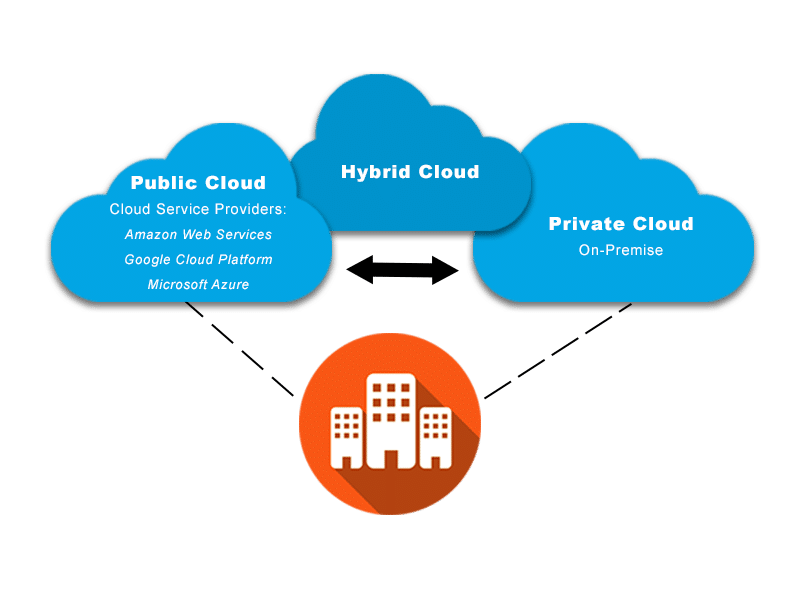"Intro to Cloud-Computing" - All you need to know
“With the cloud, individuals and small businesses can snap their fingers and instantly set up enterprise-class services.” - Roy Stephan
Let's begin with the most overwhelming question !
What is Cloud Computing ?
Cloud computing is the delivery of different services through the Internet. These resources include tools and applications like data storage, servers, databases, networking, and software.
Simply put , It means storing and accessing data over the Internet. Traditionally, an Organization would spend a lot of money , time and workforce to store and maintain all the data locally (usually in hard drives). This Process would become cumbersome if dealing with tens of thousands of customers. Thus, the business will eventually lose it's focus.
Here comes , "Cloud Computing" to the rescue . You do not need to spend on Infrastructure , basically you can rent it from Cloud Providers . It's Safe , Secure , Cost effective , Disaster Prone , Scalable etc..

While there are numerous cloud providers, These are some of the major ones:
- AWS (Amazon Web Services)
- Microsoft Azure
- Google Cloud
- Alibaba Cloud
- IBM Cloud
- Oracle
- Salesforce
- SAP
Types of Cloud
Based on Cloud Deployment
Cloud deployment describes the way a cloud platform is implemented, how it’s hosted, and who has access to it.
There are 3 broadly classified Cloud Deployments:
Public Cloud
Private Cloud
Hybrid Cloud

Public Cloud
In a Public cloud, the cloud Infrastructure is owned by a cloud provider and is accessible to the public over the internet. The cloud provider hosts the cloud infrastructure, and end users can access it remotely without the need to buy and set up a working environment (such as buying hardware and software). Public cloud resources are shared among different end users. Users are typically charged for the duration for which these services are used.
Private Cloud
In a Private cloud, the cloud infrastructure is owned by an organization. The infrastructure is accessible to specific users(mainly the company employees and end-users) via the organization's intranet. Here, the Organization is responsible for the Security and terms of use.
Hybrid Cloud
Simply put, hybrid clouds combine public clouds with private clouds. In a hybrid cloud, the infrastructure includes an owned private cloud and a leased public cloud. Hybrid clouds enable the idea of "cloud bursting," in which an organization uses its private cloud for most of its needs and dynamically provisions resources in the public cloud when utilization exceeds the capacity of its private cloud.
Based on Cloud Services
All public cloud computing services are built upon the same conceptual framework of remote infrastructure powered by servers housed in a data center but they’re separated by the service they would provide.
There are 4 broadly classified Cloud Computing Services:
Infrastructure as a Service(IaaS)
Platform as a Service(PaaS)
Software as a Service(SaaS)
Serverless

Infrastructure as a Service(IaaS)
Also known as Hardware as a Service (HaaS). It is one of the layers of the cloud computing platform. It allows customers to outsource their IT infrastructures such as servers, networking, processing, storage, virtual machines, and other resources by bypassing the cost and complexity of buying and managing physical servers and datacenter infrastructure. Users access these resources on the Internet using a pay-as-per use model. Ex- Azure Compute , AWS EC2 , Google Compute Engine etc.
Platform as a Service(PaaS)
PaaS delivers a framework for developers that they can build upon and use to create customized applications. All Servers, Storage, OS and Networking are managed by the Cloud provider while the developers can maintain management of the applications. Ex- Azure App Service , AWS Elastic Beanstalk, Apache Stratos, Google App Engine etc.
Software as a Service(SaaS)
Software as a service is a method for delivering software applications over the internet. Basically , it's a fully-developed software solution ready for purchase and use over the internet on a subscription basis. With SaaS, cloud providers host and manage the software application and underlying infrastructure. They also handle any maintenance, like software upgrades and security patching. Users connect to the application over the internet, usually with a web browser on their phone, tablet or PC. Ex- Microsoft Office, Google Workspace(G-Suite), Cisco WebEx.
Serverless
Serverless computing is an architecture where code execution is fully managed by a cloud provider, instead of the traditional method of developing applications and deploying them on servers.
It means developers don't have to worry about managing, provisioning and maintaining servers when deploying code. Previously a developer would have to define how much storage and database capacity would be needed pre-deployment, slowing the whole process down.
Simply put, your code is automatically executed when a particular event is triggered and you are charged for it. Also, you don't have to manually allocate the resources.
Serverless relies on functions, or more specifically functions-as-a-service (FaaS), where developers break down their applications into small, stateless chunks, meaning they can execute without any context regarding the underlying server.
Ex - Azure Functions, AWS Lambda etc.
Thanks for Reading !! In the next blog, I will start with basic Azure Terminologies.
Be Safe . Keep Hustling!
Love Nataraj ❤️❤️
